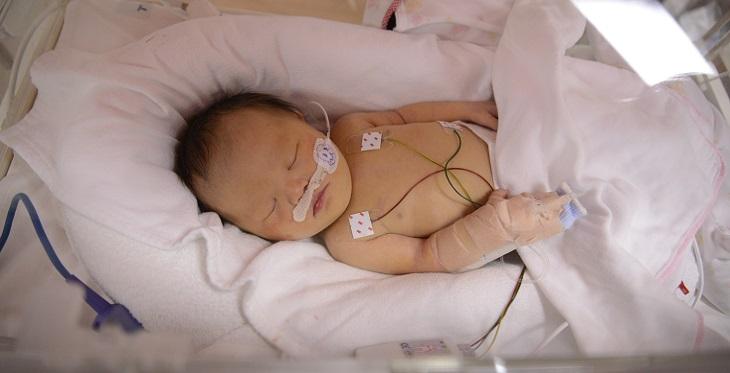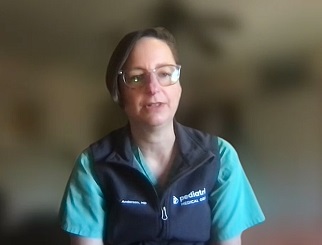
Until earlier this year, newborn infants in the Four Corners region of New Mexico, born prematurely or with unique health problems requiring specialty care, were typically transported to neonatal intensive care units at larger hospitals hours from home.
According to Dr. Bradley Scoggins, the purchase of an Amwell telemedicine cart and a new telehealth partnership with Presbyterian Hospital’s Neonatal Intensive Care Unit (NICU) team in Albuquerque, NM has helped keep more infants at the San Juan Regional Medical Center in Farmington, NM.

“We’ve been working to improve care and services for our families,” Scoggins said. “It is so stressful for parents when children are being cared for so far from home.”
For the rural communities surrounding Farmington, the agreement is another example of how telemedicine effects positive change for families and patients, as well as providers. Scoggins, San Juan medical director, and pediatrician, said it comes down to the following benefits:
• higher acuity newborns can remain at the hospital’s Childbirth Center’s Level II Special Care Nursery,
• the stress and costs for families of newborns decreases. They no longer need to drive more than three hours to Presbyterian’s NICU to be near their children,
• specialists at Presbyterian’s NICU are available 24/7 as part of the agreement with neonatologists, respiratory therapists, and other specialists,
• the agreement includes trainings for San Juan Regional Medical Center staff.
The telemedicine education component includes all medical team participants, including specialty nurses and respiratory therapists working with these small and vulnerable patients. For parents, Scoggins said the technology via the Amwell telemedicine cart allows them to ask neonatologists questions in real time.

Recent reports focused on maternity care have pointed out that more than half of rural counties in the United States lack obstetric care. In New Mexico, 17 of the state’s 33 counties have limited to no obstetric care. Partnerships between hospitals like Presbyterian and San Juan are one of many examples of using telemedicine to improve care.
“We’ve always had a good working relationship with Presbyterian,” said Scoggins, pointing out that Presbyterian specialists have always been available to San Juan clinicians by phone. San Juan Regional Medical Center, a non-profit hospital, is a 198-bed, level III trauma center.
In the interview with Scoggins is Dr. Jennifer Anderson, a neonatologist and director of the NICU at Presbyterian Hospital. Presbyterian Hospital is a Level III NICU with 60 Beds, one of three in Albuquerque, and the largest acute care hospital in the state.
“It’s important for Presbyterian to work with rural communities,” Anderson said. “We’ve been doing it for years, but telemedicine is giving these communities an advantage.”
Anderson, using Socorro, NM as an example of one of the first rural communities Presbyterian first started working with, said outreach and care in rural areas of New Mexico is a priority. Presbyterian currently has five hospitals outside Albuquerque and more than 80 clinics.
Scoggins said if he was to offer advice to other rural hospitals starting a telemedicine partnership like the one between San Juan and Presbyterian, he recommends hospitals look at physician credentials in the planning stages.
“We had different credentials in place at San Juan. Clinicians at Presbyterian had to be credentialed to provide telemedicine here,” he said. “There was a small delay, but we figured it out. There are details in telemedicine that not everyone expects, but that doesn’t mean it isn’t worthwhile.”


